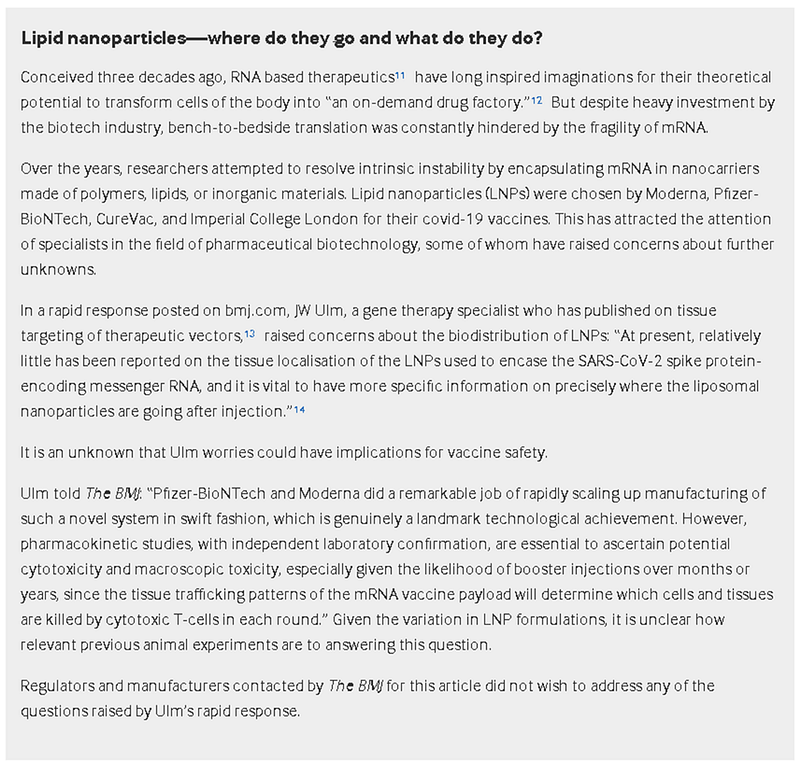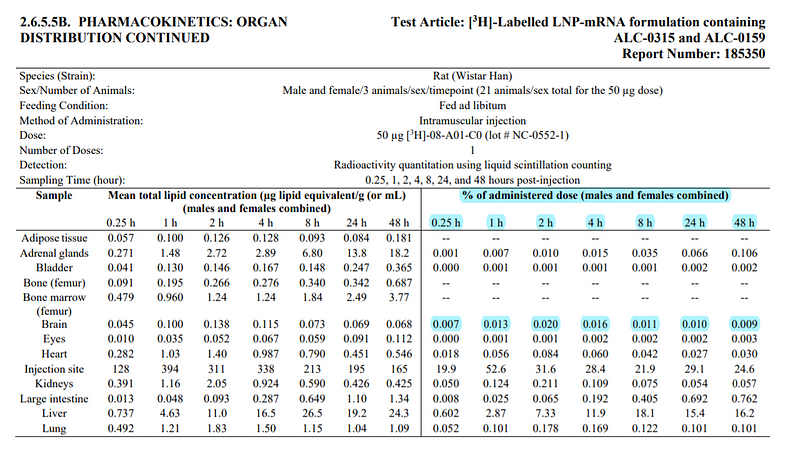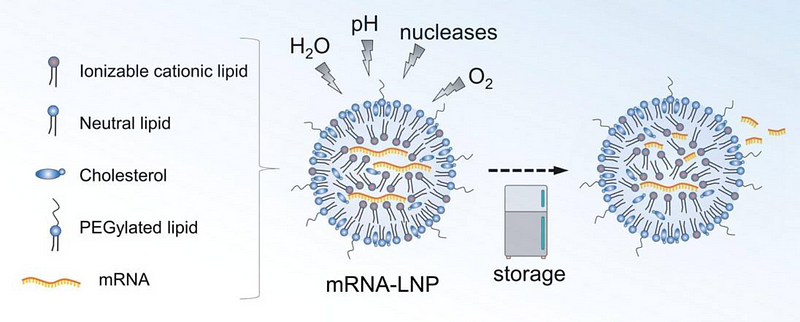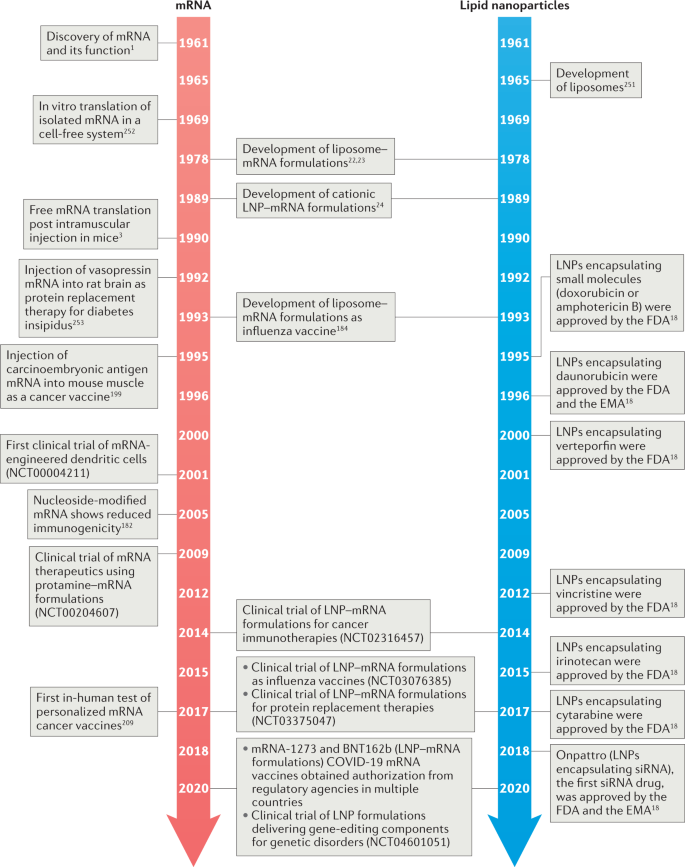mRNA Vaccine and the Brain: A Recap and Update
Can the lipid nanoparticles carrying (Covid-19) mRNA vaccine really cross the blood-brain barrier? No, it’s not designed to.

A few researchers have previously raised the hypothetical concern of the Covid-19 mRNA vaccine, encapsulated in lipid nanoparticles (LNPs), entering the brain, given that LNPs can be used to deliver medical drugs across the blood-brain barrier (BBB) into the brain.
I detailed this issue in detail in “Concerns of Lipid Nanoparticle Carrying mRNA Vaccine into the Brain: What to Make of It?” back in March 2021, discussing arguments favoring and disfavoring it, with the conclusion that such an issue isn’t an alarming problem. Let’s see why again and what are the more recent developments.
What was the initial concern?
Jacob Wes Ulm, MD, Ph.D., a geneticist specializing in gene therapy, first emphasized that the biodistribution data of the LNP-encapsulated mRNA vaccine is lacking. (All mRNA vaccine mentioned herein refers to the Covid-19’s one that is encapsulated in LNPs.)
Assuming that the LNPs carried the mRNA vaccine into the brain, brain cells (e.g., neurons) might translate the mRNA into spike protein, which might then be marked as foreign by the immune system. With repeated vaccine boosters, more and more neurons might possibly be marked for destruction by the immune system over time.
This issue doesn’t have to involve brain cells but could be anywhere in the body where the mRNA vaccine might end up in. Dr. Ulm suspected the brain because LNPs of certain formulations are used to bypass the blood-brain barrier that blocks foreign matter, such as medical drugs or pathogens, from entering the brain. The BBB is lipid-soluble, after all.
Here’s a summary of Dr. Ulm’s hypothetical concern that was published as a rapid response in the British Medical Journal (BMJ) in March 2021:

More recently, Botond Z. Igyártó, Ph.D., an associate professor in immunology and microbiology, and colleagues have raised similar concerns about the off-targets of mRNA vaccine. In a paper published in Current Opinion in Virology in June 2021, titled “Future considerations for the mRNA-lipid nanoparticle vaccine platform,” they wrote:
Based on the current mRNA-LNP vaccine design, LNPs can be taken up by almost any cell type, near or far from the site of injection, transfecting them with the antigen-encoding mRNA. Moreover, the mRNA used in these vaccines are nucleoside-modified to decrease inflammatory responses and increase its stability in vivo, allowing extended periods of mRNA translation. Also, a significant portion of the mRNA can be re-packaged and expelled from transfected cells in extracellular vesicles (EVs). These vesicles could reach cells far from the injection site, further increasing the number of cells translating the antigen and extending the duration of its expression.
*hyperlinks added based on the references cited in the paper.
So, similar to Dr. Ulm, Dr. Igyártó and colleagues speculated that the mRNA vaccine might reach unintended tissues — called off-targets — that might have unintended consequences.
Addressing the brain biodistribution concern
But animal studies, using luciferase visualization as a proxy for the cellular localization of mRNA vaccine, have shown that off-targets don’t really happen. In fact, the mRNA vaccine is mostly localized in the muscles (at the injection site), liver, spleen, and lymph nodes, with only very tiny traces ended up elsewhere, such as the heart and brain.
These studies are detailed in my previous article:

Such biodistribution patterns in animals are also consistent with the European Medicines (EMA) assessment reports and, more recently, the Japanese biodistribution study.
For example, the EMA report of Moderna’s mRNA vaccine stated that:
Low levels of mRNA could be detected in all examined tissues except the kidney. This included heart, lung, testis and also brain tissues, indicating that the mRNA/LNP platform crossed the blood/brain barrier, although to very low levels (2–4% of the plasma level). Liver distribution of mRNA-1647 is also evident in this study, consistent with the literature reports that liver is a common target organ of LNPs…. The mRNA constructs were not measurable after maximum 3 days in tissues other than the muscle, lymph nodes, and spleen (~25 hours in brain).
For Pfizer’s mRNA vaccine biodistribution, the EMA report stated that:
Over 48 hours, distribution from the injection site to most tissues occurred [presumably including the brain], with the majority of tissues exhibiting low levels of radioactivity…. Total recovery (% of injected dose) of radiolabeled LNP+modRNA outside the injection site was greatest in the liver (up to 21.5%) and was much less in spleen (≤1.1%), adrenal glands (≤0.1%) and ovaries (≤0.1%).
The Japanese biodistribution study of Pfizer’s mRNA vaccine has also found that 0.02% and 0.009% of the vaccine administered dose ended up in the brain at 2-hour and 48-hour, respectively:

(This Japanese study has also been widely misused to push the notion that the mRNA vaccine could concentrate in the ovaries. These biodistribution data are discussed more in-depth here: “Biodistribution and Spike Protein Safety of mRNA Vaccines: An Update.”)
So, yes, the EMA and Japanese Government admit that tiny traces of the mRNA vaccine could enter other unintended tissues, including the brain. But no clinical signs of brain or neurological toxicity were noted.
For how long, though? The EMA reported that Moderna’s mRNA vaccine is no longer detectable in the brain after about 25 hours. The Japanese study noted that only 0.009% of the mRNA vaccine could be detected in the rat’s brain at 48-hour, which is still 0% when rounded off. Plus, the abovementioned luciferase-based animal studies find that the mRNA vaccine-induced production of proteins lasts for a few days only.
The mRNA vaccine is fragile (degrades easily) that needs to be stored in extreme cold: Moderna’s and Pfizer’s mRNA vaccines must be kept at −15 to −25 °C and −60 to −90 °C, respectively. The human body temperature is 37°C, so the mRNA vaccine can’t survive for long therein. Moreover, the mRNA dose has a limit, so the cells would stop translating the mRNA into proteins once the mRNA supply runs out.
So, overall, we see that the Covid-19 mRNA vaccines can get into the brain but in very tiny amounts that should be harmless and cleared within days.
Addressing the brain tropism concern
But why can’t the mRNA vaccine get into the brain easily? (Tropism refers to the tendency of a biological entity to move to a target, such as SARS-CoV-2’s tendency to infect the lower respiratory tract.)
For one, Dr. Goh Kiang Hua, MD, a consultant general surgeon and Fellow of the Royal College of Surgeons (FRCS), theorized that it isn’t easy for the mRNA vaccine to reach the brain all the way from the injection site.
The mRNA vaccine is injected into the muscles (intramuscular) at the arm. Muscles at the injection site are highly vascularized (numerous blood vessels) and densely packed with cells that can take up the mRNA vaccine. Assuming that some mRNA vaccine managed to bypass such cell denseness and enter the blood circulation, the mRNA vaccine still has to resist tremendous force as the heart pumps blood throughout the body.
“The left ventricle [of the heart] will expel the blood (with the LNPs) with great speed and force out into the aorta…If the LNPs disintegrate from the turbulence, the mRNAs will be rapidly destroyed by ribonucleases,” Dr. Goh said. “[But] those that remain intact will be sent to the WHOLE body.” Still, he further cautioned that “the structural integrity of these LNPs after being expelled from the left ventricle is doubtful.”
Second, the mRNA vaccine’s LNPs are not the same as those used for drug delivery into the brain. The former is neutrally charged; the latter is positively charged (cationic) that has a stronger electrostatic attraction to the negatively charged (anionic) cell membrane.
In a paper in press in Drug Discovery Today, titled “Brain safety concerns of nanomedicines: The need for a specific regulatory framework,” Bartlomiej Szabat-Iriaka, presumably a postgraduate student, and Marc Le Borgne, Ph.D., a professor of medicinal chemistry, wrote:
Cationic [+ve charge] lipid NPs (LNPs) are frequently used as drug delivery systems because they can enter cells more easily compared with anionic [-ve charge] NCs. However, cationic LNPs are in general more toxic than anionic LNPs. [Cationic] LNPs are likely to increase brain vascular volume, to cause BBB damage, and potentially lead to the formation of cerebral edema. Some NMs, such as mRNA vaccines, contain optimized LNPs with an ionizable surface charge that is supposed to remain neutral at physiological pH. However, it cannot be ruled out that this surface charge might change in individuals with conditions that can cause pH variations….Thus, toxicity risks resulting from NM interactions with the BBB are not negligible.
*hyperlinks added based on the references cited in the paper.
Yes, it’s not negligible, as what scientists would say for most things for the sake of accuracy. Sure, people with pH disorders might alter the charge of the mRNA vaccine’s LNPs, which might or might not be a problem. It’s might, as the authors stated, because this concern is purely speculative with no experimental data backing it up at present.
(For reference, conditions that can affect the body’s pH include (i) respiratory acidosis from chronic obstructive pulmonary disease, opiate abuse, severe obesity, or brain injury; (ii) metabolic alkalosis from vomiting, hypovolemia, or diuretic use; and (iii) respiratory alkalosis from panic attacks with hyperventilation, pulmonary embolism, pneumonia, and salicylate intoxication.)
As depicted in the figure below, the mRNA vaccine is made up of mRNA (that codes for a specific protein) encased within LNPs of mostly neutral lipids. Sure, some cationic lipids mixed in between, but they won’t affect the overall LNPs’ charge if they form only the minority in the outer layer.
The cationic lipids actually serve to interact with the mRNA (anionic in nature) to facilitate mRNA entry into the cell. Cationic lipids of the mRNA vaccine are not designed for drug delivery across the blood-brain barrier, which requires different formulations, such as additional coating with hydrophilic polymers or with receptors present on the blood-brain barrier.

To close
In fact, LNPs are not even strictly used for drug delivery into the brain. They can be designed for other medical uses too.
As summarized in a 2021 paper published in Nature Reviews Materials, the Food and Drug Administration (FDA) has approved several LNP-based drugs for treating cancer (doxorubicin, daunorubicin, vincristine, irinotecan, and cytarabine), fungal infections (amphotericin B), macular degeneration (verteporfin), and peripheral nerve disorder (Onpattro):

The Covid-19 mRNA vaccines from Moderna and Pfizer are, therefore, just another FDA-approved LNP-based drugs or biologics that are not designed to cross the blood-brain barrier. While tiny traces of the mRNA vaccine have been detected in the brain (and other unintended tissues) of animals, they are too minute to be of any significant consequences for reasons discussed above.
If you have made it this far, thank you. Subscribe to my Medium email list here. If you want to become a member to get unlimited access to Medium, you can use my referral link, and I will receive a small commission at no extra cost to you. You can also tip me below if you are feeling generous today, and I’ll appreciate it. Paying bills with science writing isn’t easy, so I’ll appreciate any help I can get.




